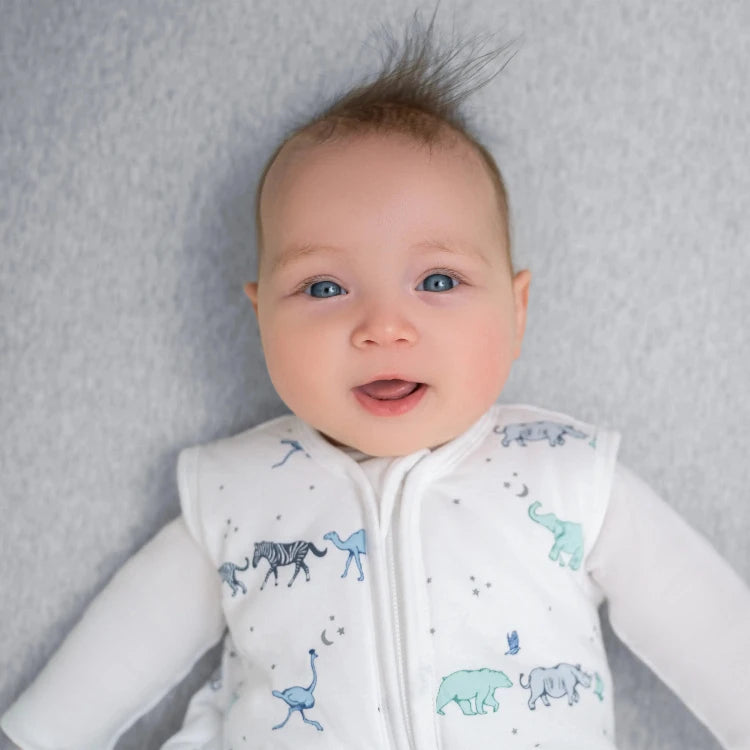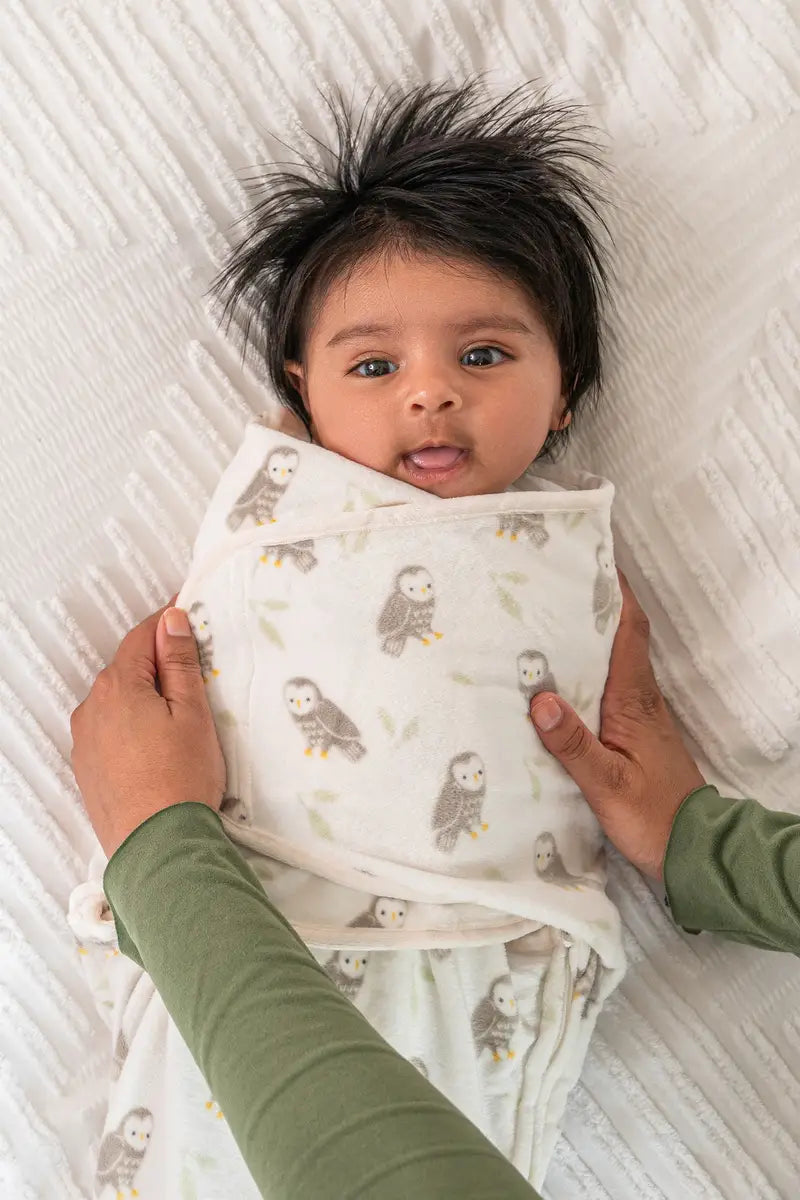TOG RATING AND TEMPERATURE:
CHOOSING THE RIGHT SLEEPING BAG FOR BABY
ORIGINALLY POSTED: 16 October 2023
As a parent, you want your baby to be as comfy as possible, especially while sleeping. After all, a comfy baby typically sleeps better! When you’re looking at the different sleepwear and blanket options on the market, you may have noticed the word “TOG.” Knowing what this word means and how to choose the best TOG rating for your little one can help keep them comfy, cosy, and sleeping longer.
What is TOG Rating?
TOG stands for thermal overall grade. It’s a standard of measurement in the textile industry to indicate how warm a garment is. It can be applied to everything from baby blankets to duvets and comforters. Essentially, a TOG rating lets you know how warm something will keep the person using it.
When it comes to baby clothes, TOG is typically referr to the warmth rating of sleepwear, such as baby sleeping bag, baby wearable blankets or baby swaddle blankets. You’ll typically find baby sleep garments ranging from a rating of 0.5 to 3.5.
Why is TOG Important?
Understanding TOG ratings is particularly important when shopping for baby sleepwear because infants are more sensitive to temperature changes and have limited ability to regulate their body temperature. Ensuring that babies are dressed appropriately for the ambient temperature is crucial for their comfort, safety, and well-being. Overheating or excessive warmth can increase the risk of sudden infant death syndrome (SIDS) and may contribute to discomfort, restlessness, and disrupted sleep for babies.
TOG Value and Room Temperature
The tog value of baby sleepwear should be considered in relation to the room temperature to create a comfortable and safe sleep environment. The tog value indicates the level of insulation provided by the sleepwear, while the room temperature affects the overall ambient temperature that the baby will experience.
Here are some general guidelines for matching tog values with room temperatures when selecting baby sleepwear:
- Warm weather or hot room: If the room temperature is around 24°C (75°F) or above, it is recommended to use sleepwear with a low tog rating or no additional layers. A tog rating of 0.2 to 1.0 would be suitable for these conditions.
- Average room temperature: For room temperatures between 20°C and 24°C (68°F to 75°F), sleepwear with a tog rating of 1.0 to 2.5 is typically appropriate. This range provides a lightweight level of insulation.
- Cooler room temperature: If the room temperature falls between 16°C and 20°C (61°F to 68°F), sleepwear with a tog rating of 2.5 to 3.5 is generally suitable. This provides a bit more insulation to keep the baby warm.
- Cold weather or cold room: In colder conditions with room temperatures below 16°C (61°F), it is advisable to choose sleepwear with a higher tog rating for better insulation. Tog ratings of 3.5 to 4.5 or higher may be appropriate.
Keep in mind that these are general guidelines, and individual preferences and baby's specific needs should also be considered. It's essential to regularly monitor the baby's comfort, feel their body temperature, and adjust the sleepwear or bedding as needed to ensure they are not too hot or too cold.

Dressing Baby for Sleep
Things to Consider:
- Temperature:
Consider the room temperature and choose sleepwear appropriate for that
temperature. As mentioned earlier, matching the tog rating of sleepwear
to the room temperature can help maintain a comfortable sleep
environment. - Layering:
Instead of using one thick layer, consider using multiple thinner
layers that can be easily added or removed to adjust the baby's comfort
level as needed. - Fabric:
Opt for soft, breathable, and hypoallergenic fabrics such as cotton.
Cotton allows air circulation and helps prevent overheating or excessive
sweating. - Sleepsack or wearable blankets:
Consider using a sleepsack or wearable blanket instead of loose
blankets to reduce the risk of suffocation and ensure the baby stays
covered and warm throughout the night.
Things to Avoid:
- Overdressing:
Avoid overdressing the baby, as overheating increases the risk of SIDS.
Make sure the baby is not too hot or sweaty to touch. Feel the baby's
chest or back to gauge their temperature. - Loose blankets or bedding:
Avoid using loose blankets, pillows, or stuffed animals in the crib, as
they can increase the risk of suffocation or strangulation. Instead,
opt for safer alternatives like sleepsacks or wearable blankets. - Clothing with small attachments:
Avoid sleepwear with small buttons, bows, or other small attachments
that can pose a choking hazard. Opt for sleepwear with secure,
baby-friendly closures. - Uncomfortable or irritating fabrics: Avoid sleepwear made of rough or irritating materials that can cause discomfort or skin irritation for the baby.
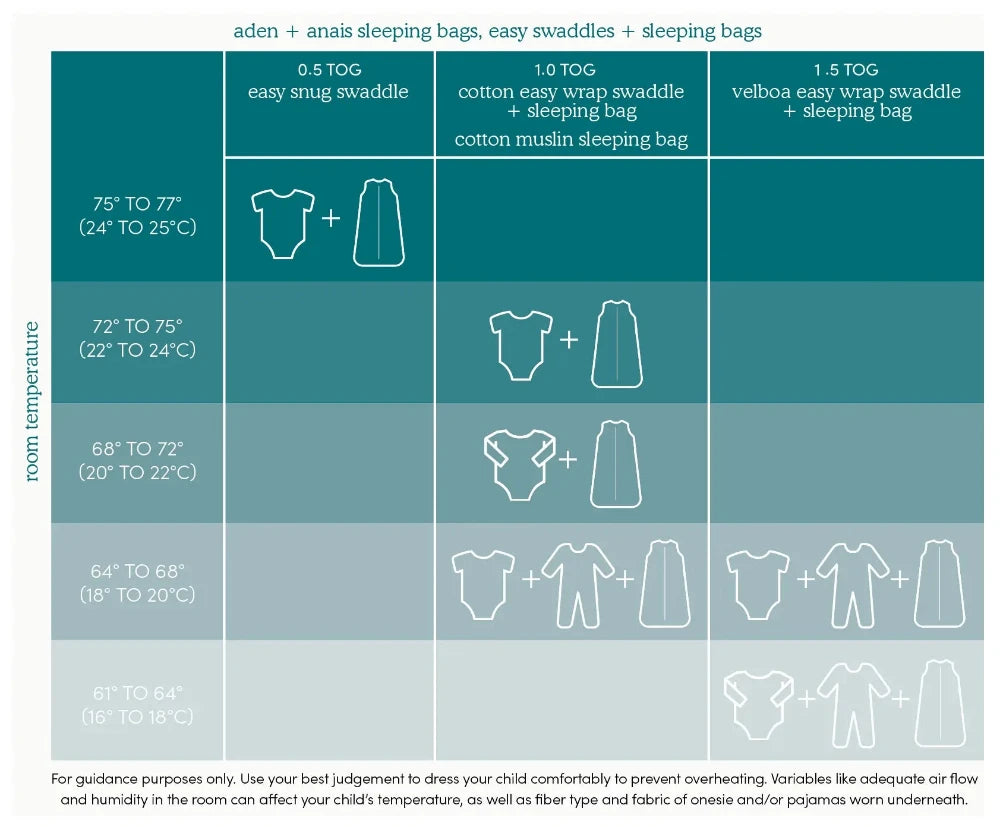
TOG VALUE BY SEASON
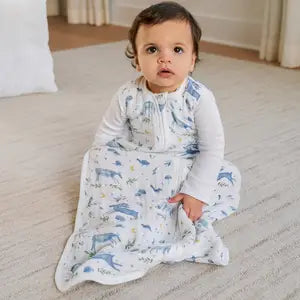
Summer
A TOG value of 0.5 to 1.0 is suitable for temperatures of 24°C (75°F) or higher. This provides a light layer of insulation to keep your baby comfortable without overheating.
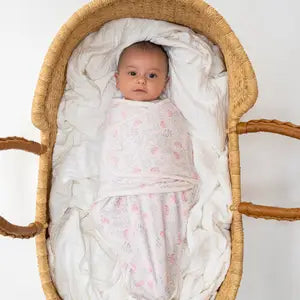
Spring and Fall
A TOG value of 1.0 to 2.5 is appropriate for temperatures between 20°C (68°F) and 24°C (75°F). This provides a moderate level of insulation to keep your baby warm in cooler temperatures.
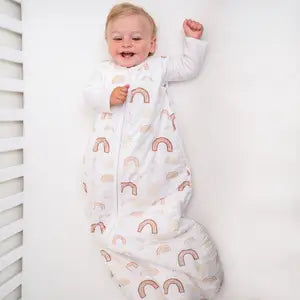
Winter
A TOG value of 2.5 to 3.5 or higher is suitable for temperatures between 16°C (61°F) and 20°C (68°F). This provides a higher level of insulation to keep your baby warm in colder temperatures.
Dressing Your Baby for Different Weather and Temperatures
Dressing your baby appropriately for different weather conditions and temperatures is essential for their comfort and well-being. Here are some general guidelines to consider:
- Hot Weather: Opt for lightweight and loose-fitting clothing made of breathable fabrics like cotton. Dress your baby in short-sleeved onesies or lightweight rompers. Use a wide-brimmed hat to protect their head and face from the sun. Avoid overdressing or using heavy layers.
- Warm Weather: Choose lightweight and breathable fabrics like cotton or linen. Dress your baby in short-sleeved or sleeveless onesies, dresses, or light shorts. Consider using a lightweight muslin swaddle or a thin cotton blanket for naps or shading.
- Moderate Weather: Opt for a combination of lightweight and slightly warmer clothing layers. Dress your baby in long-sleeved onesies, lightweight pants, or leggings. Use a lightweight cardigan or jacket for added warmth when necessary. Consider layering with a cotton or muslin swaddle or a lightweight blanket.
- Cool Weather: Choose warmer fabrics like fleece, cotton blends, or knits. Dress your baby in long-sleeved onesies, pants, or leggings. Use a medium-weight jacket, sweater, or hoodie to provide additional warmth. Consider using a warmer sleepsack or a thicker blanket for sleep.
- Cold Weather: Opt for thick and warm fabrics like fleece, wool, or thermal materials. Dress your baby in long-sleeved onesies, thermal tops, and pants. Use a warm jacket, snowsuit, or bunting for outdoor activities. Layer with socks, booties, mittens, and a hat to keep extremities warm. Choose a thicker and cozy sleepsack or blanket for sleep.
Remember to monitor your baby's comfort by feeling their body temperature, checking for signs of sweating or chilliness, and adjusting their clothing layers accordingly. It's important to maintain a balance between warmth and preventing overheating.
Additionally, consider factors like wind, rain, or sun exposure when dressing your baby for outdoor activities. Always prioritize their safety and consult with healthcare professionals or trusted sources for specific recommendations based on your baby's age, health, and local climate conditions.
